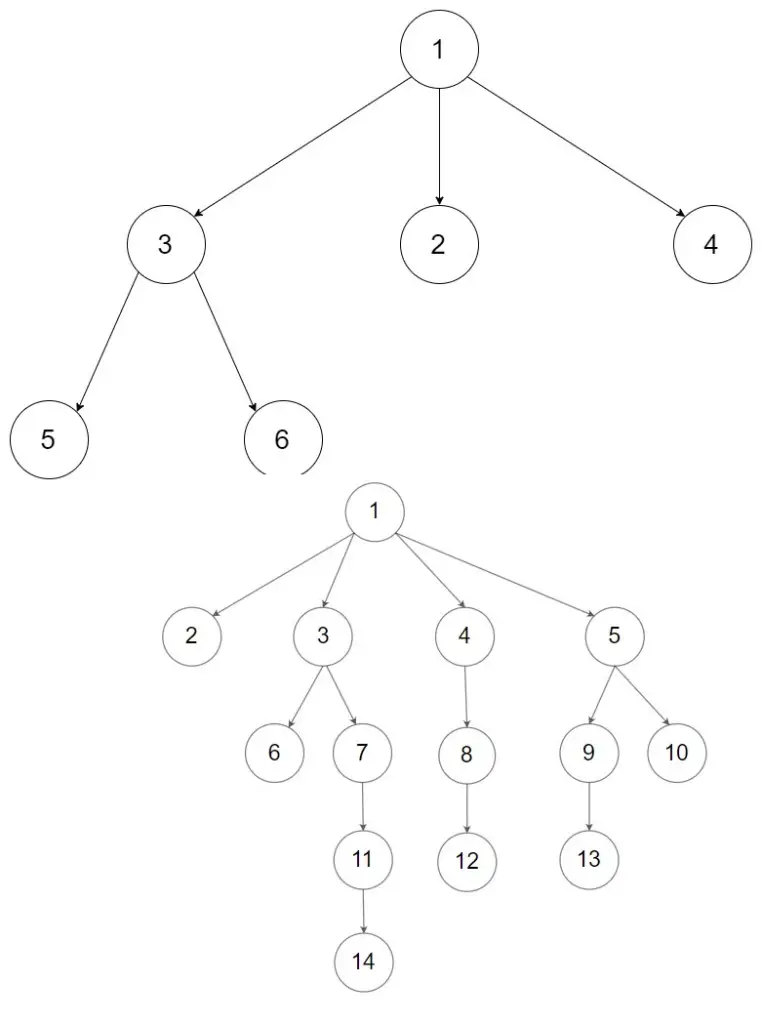Given the root of an n-ary tree, return the preorder traversal of its nodes’ values.
Nary-Tree input serialization is represented in their level order traversal. Each group of children is separated by the null value (See examples)
Input: root = [1,null,3,2,4,null,5,6]
Output: [1,3,5,6,2,4]Input: root = [1,null,2,3,4,5,null,null,6,7,null,8,null,9,10,null,null,11,null,12,null,13,null,null,14]
Output: [1,2,3,6,7,11,14,4,8,12,5,9,13,10]
N-ary Tree Preorder Traversal Algorithm in GoLang
Using Depth First Search Algorithm, we can traverse the binary tree in pre-order. The DFS can be implemented using Recursion – see below GoLang implementation.
1 2 3 4 5 6 7 8 9 10 11 12 13 14 15 16 17 18 19 | /** * Definition for a Node. * type Node struct { * Val int * Children []*Node * } */ func preorder(root *Node) []int { if root == nil { return []int{} } var ans = make([]int, 0) ans = append(ans, root.Val) for i:=0; i < len(root.Children); i ++ { ans = append(ans, preorder(root.Children[i])...) } return ans } |
/**
* Definition for a Node.
* type Node struct {
* Val int
* Children []*Node
* }
*/
func preorder(root *Node) []int {
if root == nil {
return []int{}
}
var ans = make([]int, 0)
ans = append(ans, root.Val)
for i:=0; i < len(root.Children); i ++ {
ans = append(ans, preorder(root.Children[i])...)
}
return ans
}We use the triple dots … to append a list of ints to existing list of ints.
See also: GoLang Programming: N-ary Tree Preorder Traversal Algorithm using Depth First Search
–EOF (The Ultimate Computing & Technology Blog) —
loading...
Last Post: Teaching Kids Programming - Two Pointer Algorithm to Rescue People in Rocketship
Next Post: Teaching Kids Programming - Dynamic Programming Algorithm to Compute Minimum Number of Coins
